Keeping your dog’s skin healthy is just as important as maintaining their coat. Regular grooming plays a vital role in preventing and managing common skin issues like dermatitis, scabies, and hotspots.
Consistent grooming and the use of medicated baths are parts of the treatment plan for these conditions. We will cover why grooming is essential, how it helps manage skin conditions, and step-by-step guides on bathing your dog with medicated shampoos for effective relief.
Here’s how you can keep your dog’s skin irritation-free and comfortable.
Why Regular Grooming is Important for Dog Skin Health
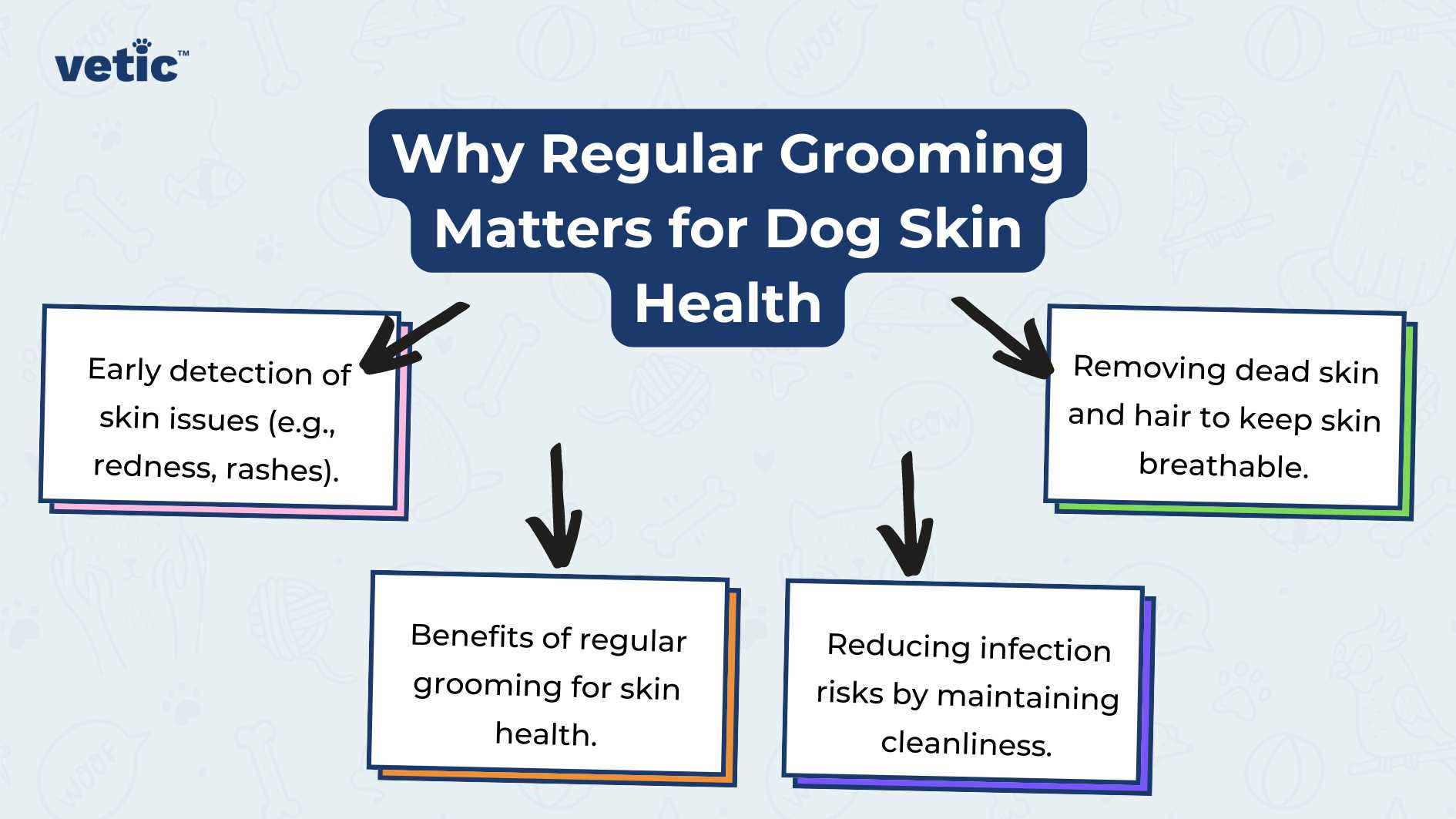
Grooming is more than just keeping your dog clean and looking good. It’s essential for:
- Detecting skin issues early: Regular grooming lets you spot redness, rashes, or flaky skin early before conditions worsen.
- Removing dead skin and hair: This helps prevent blocked pores and reduce irritation, allowing the skin to breathe.
- Reducing infection risks: Regular cleaning minimises the buildup of bacteria and yeast, preventing skin infection.
Common Skin Problems in Dogs
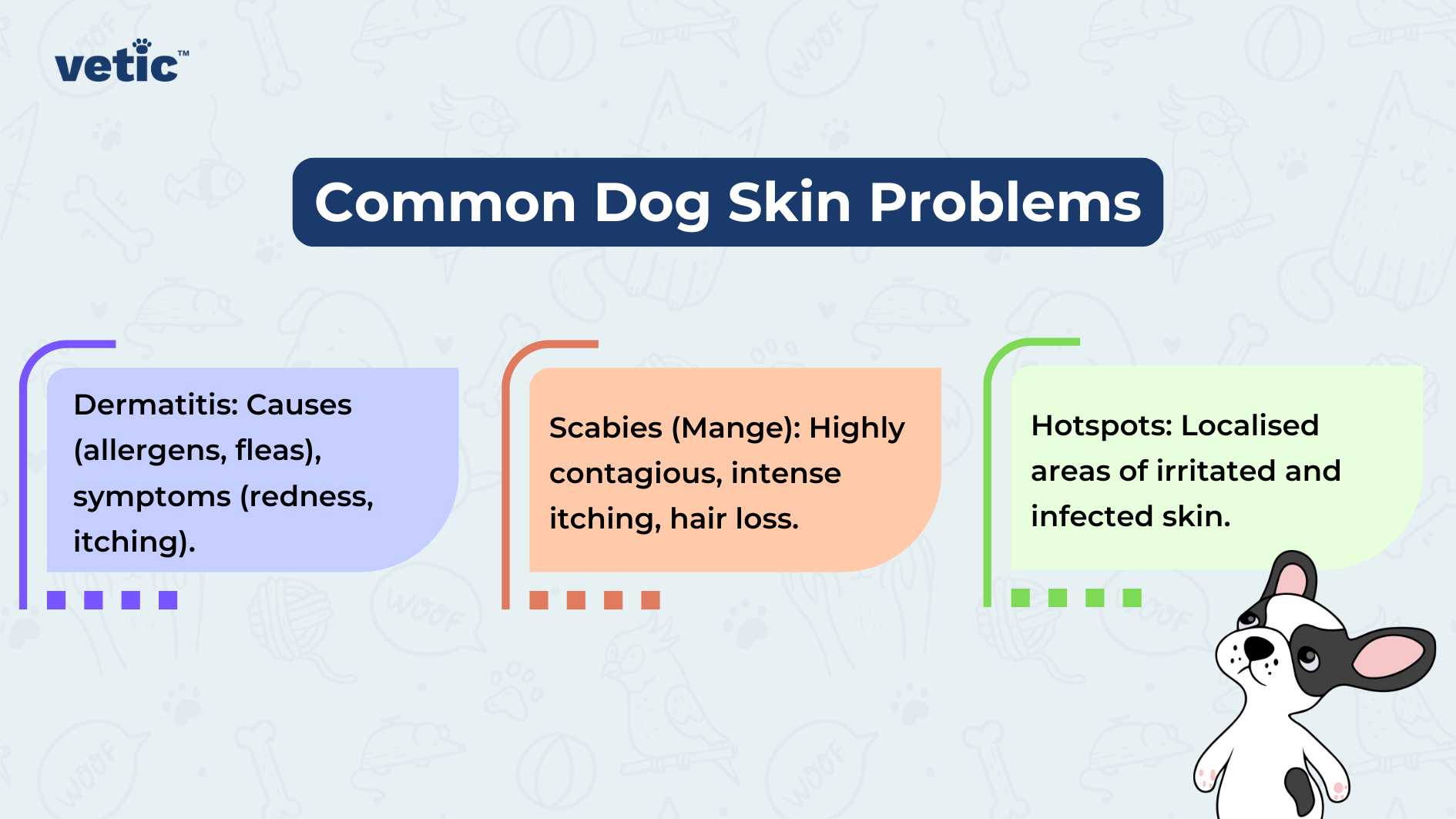
Dogs are prone to several skin conditions that can cause discomfort. Let’s discuss the three most common skin problems in dogs:
1. Dermatitis
Dermatitis refers to inflammation of the skin caused by allergens, fleas, irritants, or underlying conditions.
- Symptoms:
- Redness
- Itching
- Swelling
- Crusty patches
2. Scabies (Mange)
Scabies is a highly contagious skin disease caused by mites.
- Symptoms:
- Intense itching
- Hair loss
- Red, inflamed skin
- Crusty sores
3. Hotspots
Hotspots are localised areas of inflamed and infected skin, usually caused by excessive licking or scratching.
- Symptoms:
- Red, moist, and irritated skin
- Hair loss in affected areas
- Warm to the touch
How Regular Grooming Helps with Skin Problems
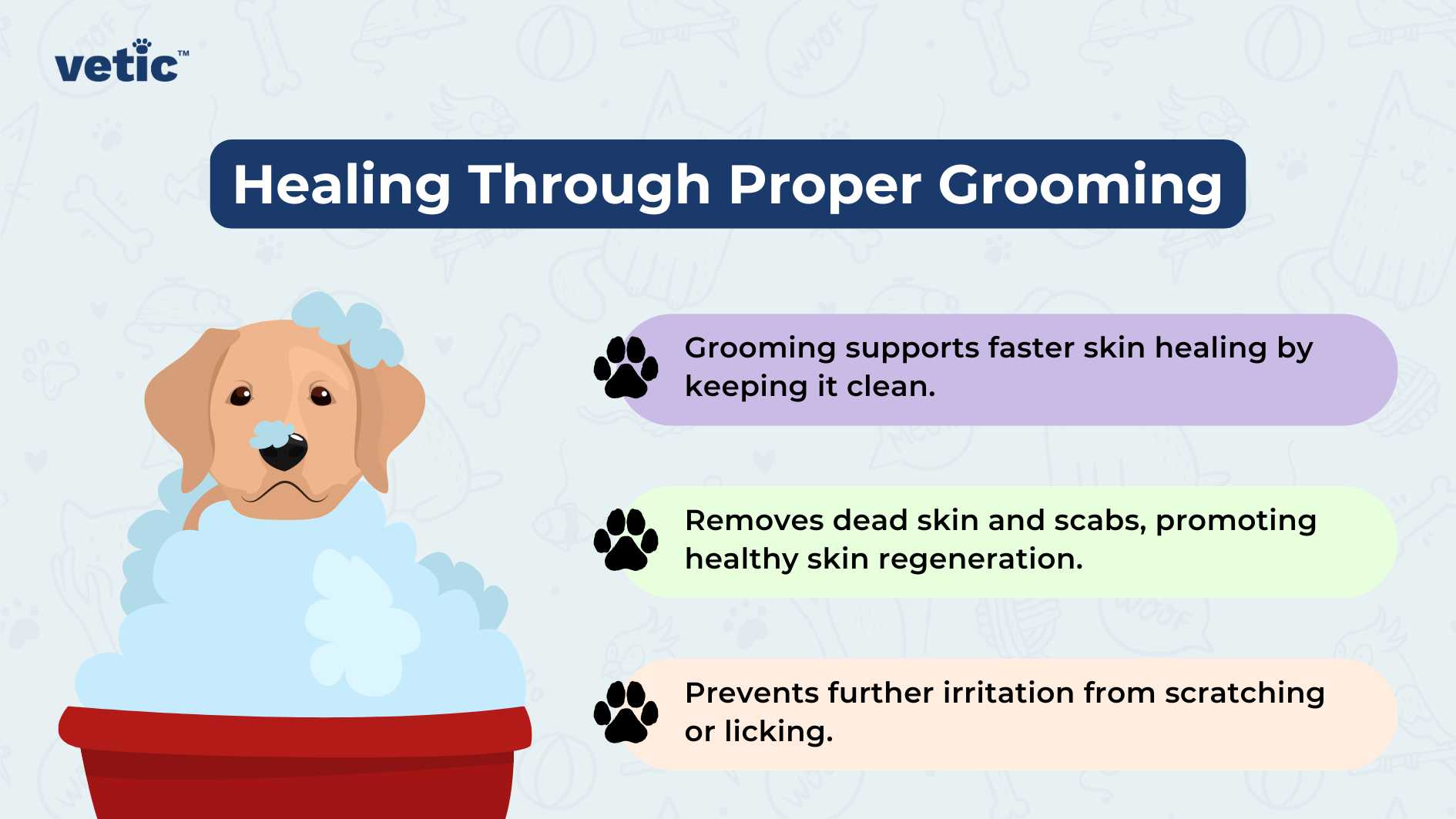
1. Prevents Skin Irritation
Regular brushing and cleaning prevent skin irritation by removing dirt, allergens, and loose fur that may trigger reactions.
- Brushing reduces the risk of matting, which can trap moisture and cause infections.
- Grooming also helps distribute natural oils, keeping the skin hydrated.
2. Promotes Healing
Proper grooming with the right products supports the healing of irritated or infected skin.
- Cleaning wounds and removing dead skin helps create an environment where the skin can heal faster.
- Grooming routines can prevent scratching or licking that would otherwise exacerbate skin conditions.
3. Helps Identify and Manage Outbreaks
Early detection of hotspots or scabies is crucial for effective treatment. Regular grooming allows you to spot these issues sooner and take action.
Medicated Baths for Skin Conditions
Medicated baths are an essential part of managing skin issues like dermatitis, scabies, and hotspots. They help relieve itching, reduce inflammation, and eliminate parasites.
You should never use human shampoos and conditioners on your dog. Do not buy OTC products from pharmacies since allergic dermatitis, flea dermatitis, scabies, fungal infections and hotspots can be difficult to distinguish without a vet’s help.
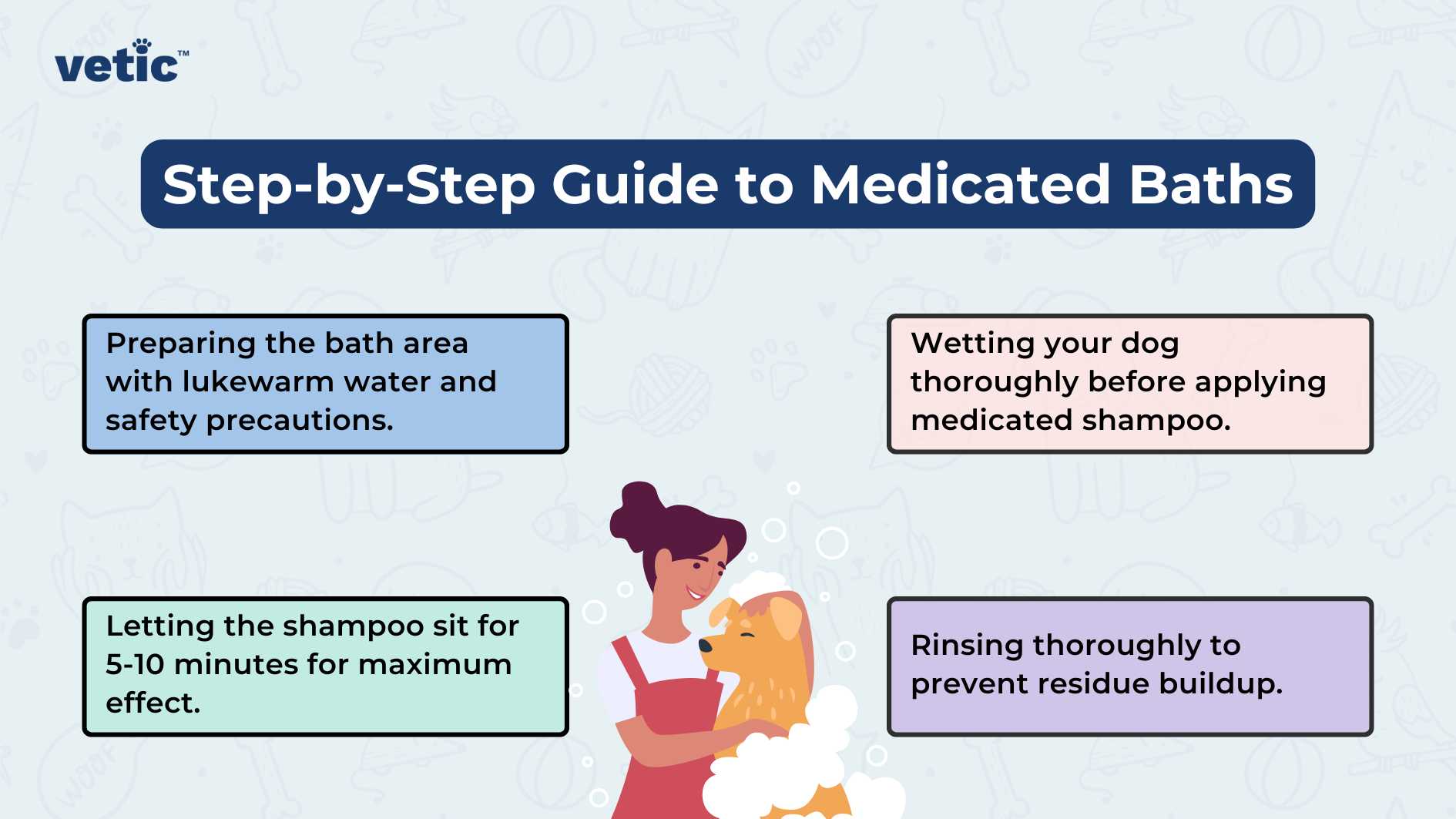 Step-by-Step Guide for Medicated Baths
Step-by-Step Guide for Medicated Baths
- Consult with Your Veterinarian
- Why: Your vet will recommend the best medicated shampoo based on your dog’s skin condition.
- Common Products:
- For Dermatitis: Shampoos containing oatmeal, chlorhexidine, or hydrocortisone.
- For Scabies: Anti-parasitic shampoos with ingredients like selamectin.
- For Hotspots: Antibacterial and antifungal shampoos, like those with benzoyl peroxide.
- Prepare the Bath Area
- Use lukewarm water to avoid irritating sensitive skin.
- Place a non-slip mat to ensure your dog’s comfort and safety.
- Wet Your Dog Thoroughly
- Ensure your dog’s coat is completely wet so the medicated shampoo can penetrate down to the skin.
- Apply Medicated Shampoo
- Steps:
- Use the shampoo as directed on the label.
- Massage it gently into the coat, focusing on problem areas.
- Avoid contact with the eyes and inside the ears.
- Steps:
- Let the Shampoo Sit
- Allow the shampoo to sit for the recommended amount of time (usually 5-10 minutes).
- This gives the active ingredients time to work.
- Rinse Thoroughly
- Rinse your dog completely to ensure no residue is left behind, as leftover shampoo can cause further irritation.
- Dry Your Dog
- Pat your dog dry with a clean towel.
- Avoid using a hairdryer on high heat, as it can dry out or irritate the skin.
- Follow-Up Care
- Post-Bath: Continue monitoring the skin for signs of improvement.
- Frequency: Medicated baths should be given as per your vet’s recommendation, usually once or twice a week.
Benefits of Medicated Baths
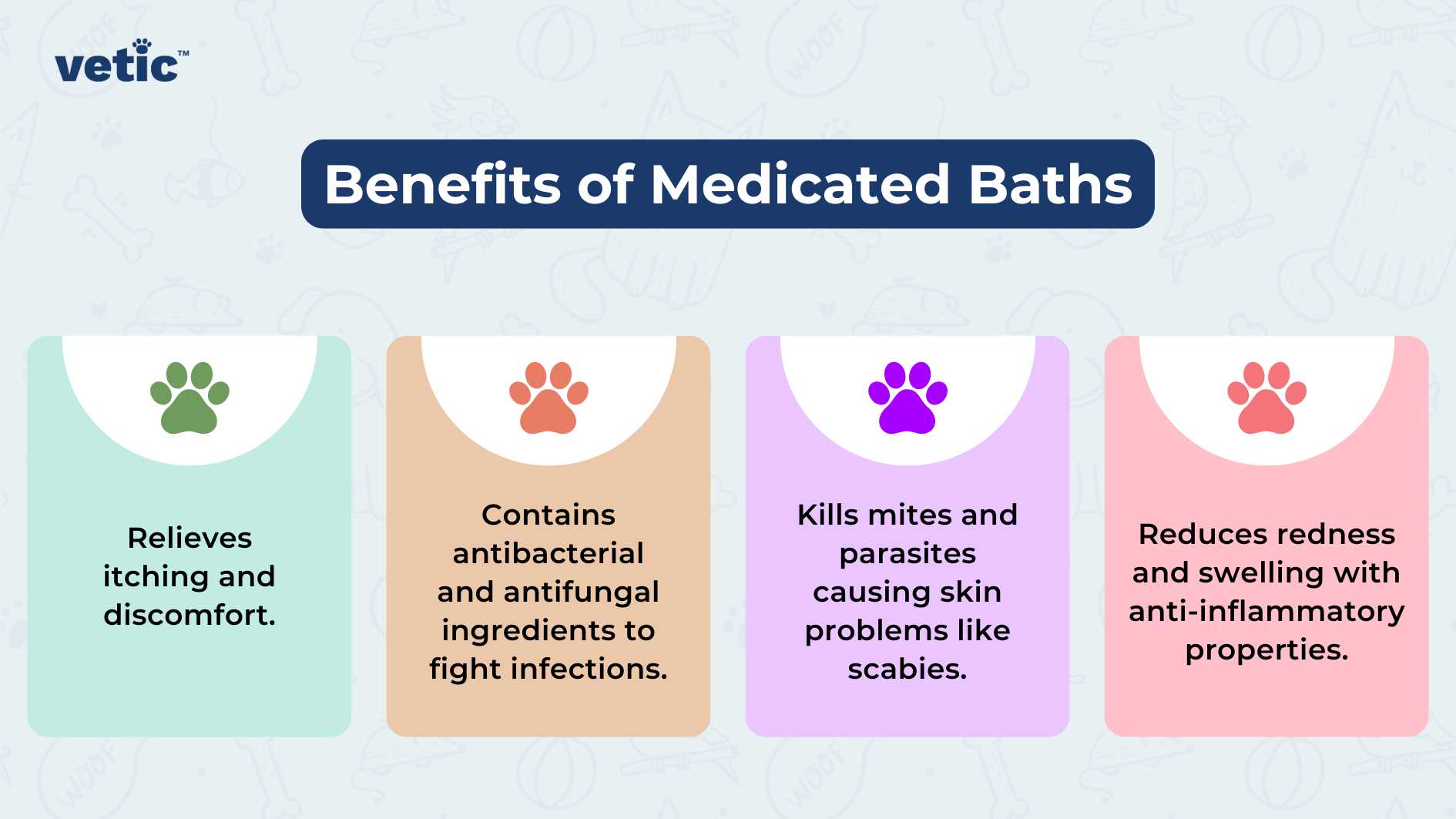
1. Relieves Itching and Discomfort
Medicated shampoos contain ingredients that soothe the skin, reducing irritation and providing relief from itching.
2. Fights Infections
These shampoos often contain antibacterial and antifungal agents that help eliminate harmful microorganisms and speed up recovery.
3. Kills Parasites
Antiparasitic shampoos used in the treatment of scabies can kill mites and prevent their spread to other pets.
4. Reduces Inflammation
Shampoos with anti-inflammatory properties, such as those containing hydrocortisone, help reduce redness and swelling.
Additional Tips for Managing Dog Skin Conditions
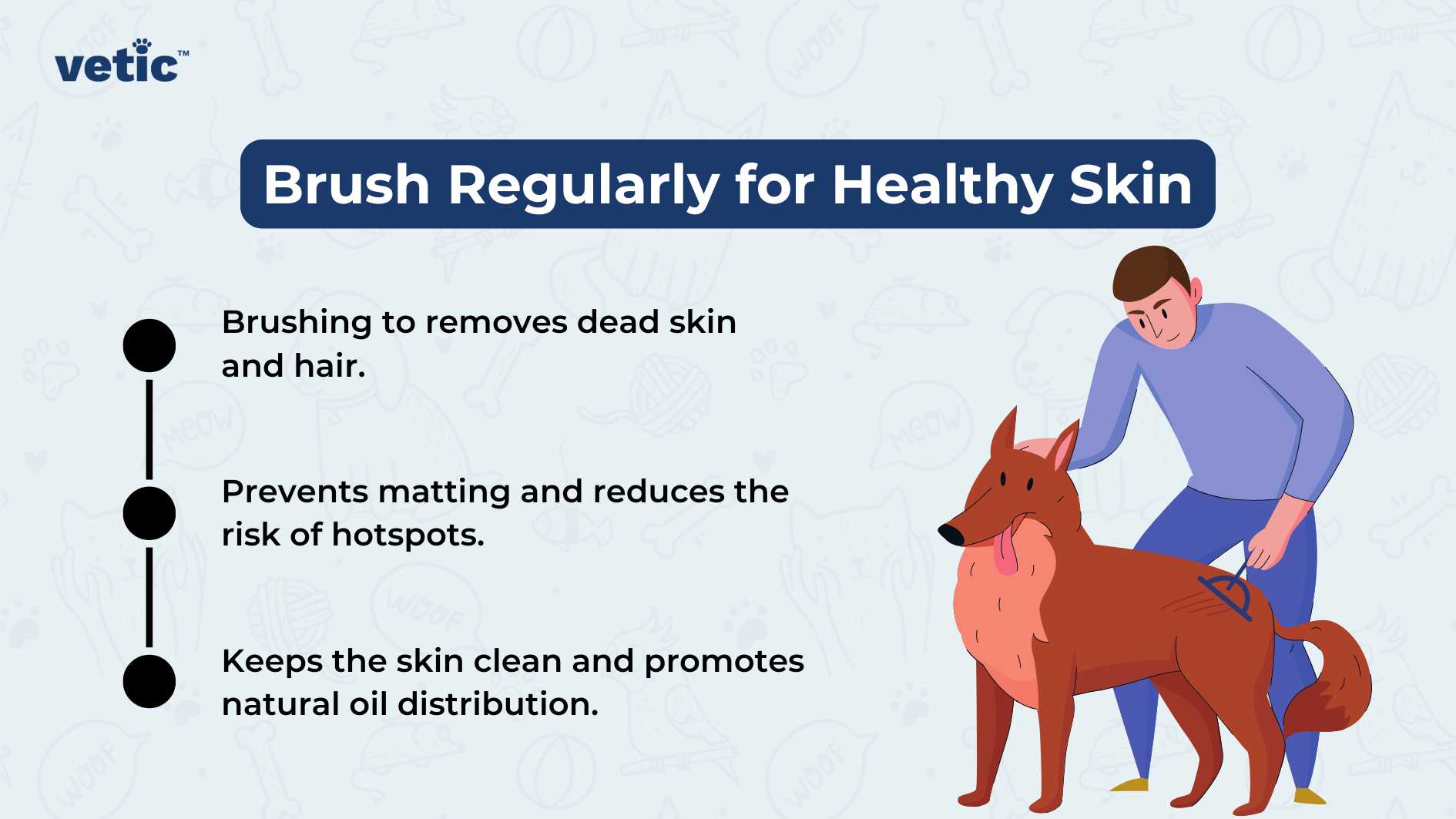
- Brush Regularly: Brushing removes dead hair and skin, preventing matting and reducing the risk of hotspots.
- Use Hypoallergenic Products: For dogs with sensitive skin or allergies, choose grooming products free from harsh chemicals and fragrances.
- Clean the Ears and Paws: These are common areas where skin problems can occur, so keep them clean to prevent infections.
- Control Parasites: Ensure your dog is on a regular flea and tick prevention plan to avoid infestations that can cause skin issues.
Signs You Need to Visit a Vet
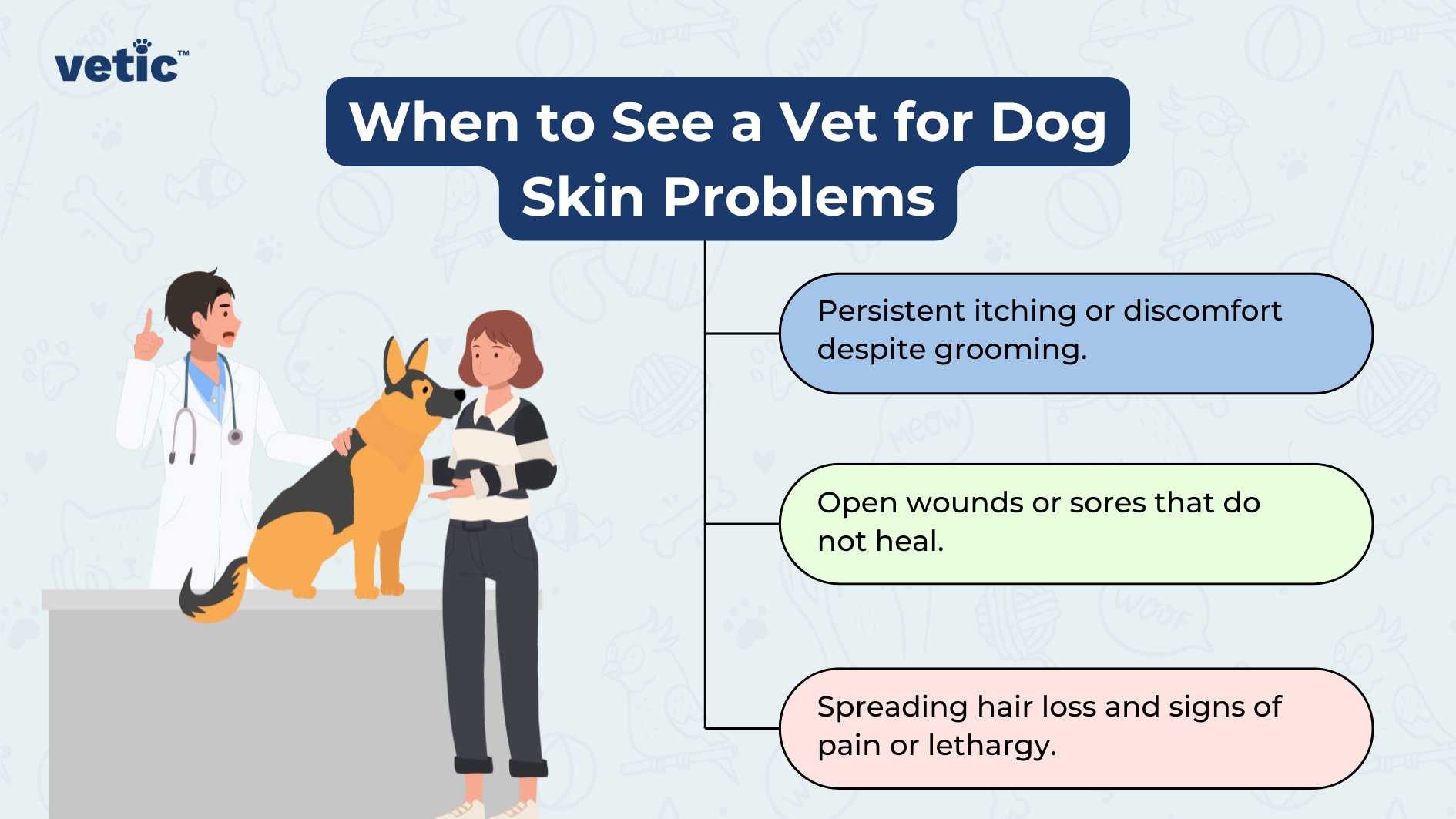
While regular grooming and medicated baths can significantly improve your dog’s skin condition, some cases require veterinary intervention. Contact your vet if you notice:
- Persistent itching or discomfort
- Open wounds or sores that do not heal
- Hair loss spreading beyond affected areas
- Signs of pain, lethargy, or unusual behaviour
At Vetic, every grooming appointment is followed by a thorough veterinary check-up. If your dog has any skin issues, you can speak with the veterinarian directly after your dog’s grooming.
Wrap-Up: Consistent Care for Healthy Skin
Groom Your Dog for Lasting Skin Health
Regular grooming is a key factor in managing and preventing skin conditions like dermatitis, scabies, and hotspots. Medicated baths, along with routine grooming, help keep infections at bay, promote healing, and relieve your dog’s discomfort. Consistent care and attention to your dog’s grooming routine will not only help manage existing skin problems but also prevent future outbreaks. Remember, keeping your dog’s coat and skin healthy is an ongoing process that ensures their overall well-being.

